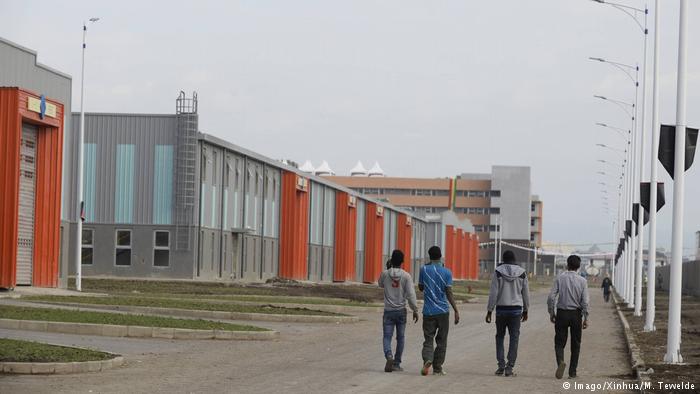Ethiopia’s economy is growing so rapidly it may soon replace Kenya as the largest economic power in the region. But a large number of people in the country still live in poverty and many challenges remain.
The recent inauguration of the giant Hawassa industrial park was a special moment for Ethiopia’s government. Built with Chinese help, the park has modern halls where leather and textile products will be produced for the European and American market. Located 275 km south of the capital Addis Ababa, the park is expected to turnover 1 billion dollars annually and provide employment for more than 60,000 people.
Ambitious plans
The plant in Hawassa is one of 16 industrial parks planned by Ethiopia’s government. In a push to revive the country’s economy, they are investing heavily in large infrastructure projects. In 2015, they rolled out a modern light railway in Addis Ababa – the first fully electric tram in sub-Saharan Africa. By 2020, a 5,000-kilometer rail network should connect the country with its neighbors and the port of Djibouti. To provide a regular source of electricity in a country where less than a quarter of people have access to power, the government is also constructing a vast dam on the upper reaches of the Blue Nile.
With a gross domestic product (GDP) of 800 US dollars (715 euro) per capita, Ethiopia is still one of the poorest countries in the world. Almost 6 million people depend on food aid.
But Ethiopia’s economy is booming. The country has experienced an average economic growth of 10.8 percent per year in the past decade and it’s expected to overtake Kenya soon to become East Africa’s largest economy. In 2014, consulting firm Deloitte & Touch spoke of an “economic miracle”.
The question is how sustainable this boom is in a country that has been under a state of emergency since October 2016 following protests against government policies and human rights abuses. The government has cracked down on dissent and arrested several opposition leaders.
In the 2015 parliamentary elections, the ruling Ethiopian People’s Revolutionary Democratic Front (EPRDF) won 500 of 547 seats, and its allies the rest. Parliament now lacks any independent or opposition voices. Internet access is also restricted.
“The state of emergency has put a brake on the economy and the tourism industry hasn’t recovered yet,” says Ethiopian entrepreneur Estifanos Samuel. But, he says, government has reassured investors and he believes that in the long-term, the economy will continue to grow.
“Ethiopia will overtake Kenya because the government is making large-scale investments and goods are being produced locally,” he says.
‘Carefully optimistic’
Samuel points out that Kenya and Ethiopia have the same level of exports, both earning 4.5 billion, but adds that “Kenya has only half of the population and imports finished textiles while Ethiopia imports 30 percent or parts of its production.”
Kenya has opened its markets further but Ethiopia is catching up. In addition, Kenya suffers from corruption and the terror of the Al-Shabab extremist group.
The German Delegation of German Industry and Commerce in Kenya is less euphoric about Ethiopia’s recovery. “We are cautiously optimistic,” says director Maren Diale-Schellschmidt. Because Ethiopia started at such a low level, it’s easier to grow quickly, she said. “I don’t believe Ethiopia has already overtaken Kenya in terms of GDP,” she says.
In addition, prosperity doesn’t necessarily go hand-in-hand with economic growth, Diale-Schellschmidt warns.
“Everyone benefits from the infrastructure, but economic power is the hands of a certain minority,” says Diale-Schellschmidt. “There is nevertheless a middle class and more jobs for qualified employees.”
Ethiopia still has many problems. Diale-Schellschmidt lists several of them, from excessive bureaucracy and high taxes and levies to a shortage of foreign currency (which restricts the purchase of important technologies).
“Ethiopia isn’t really a free state,” she criticizes. “It has a long way to go before it’s economically sustainable.”
Deutsche Welle






